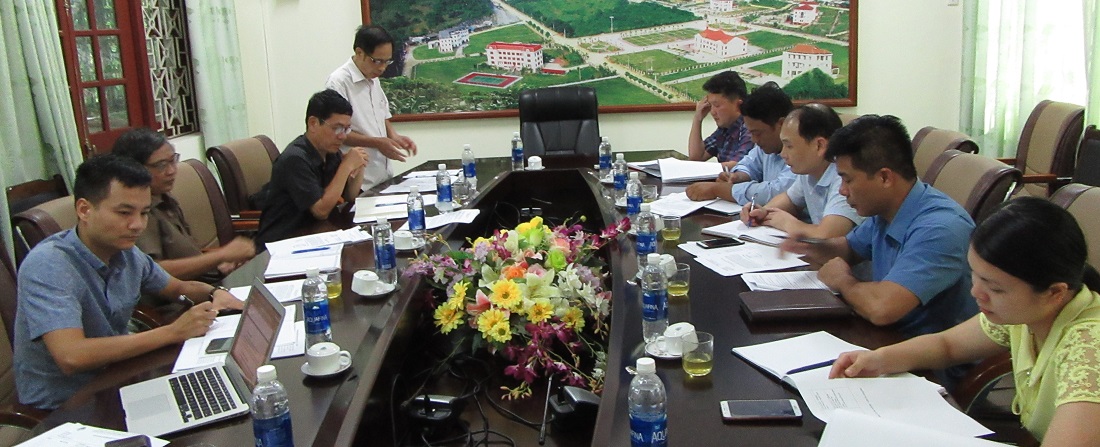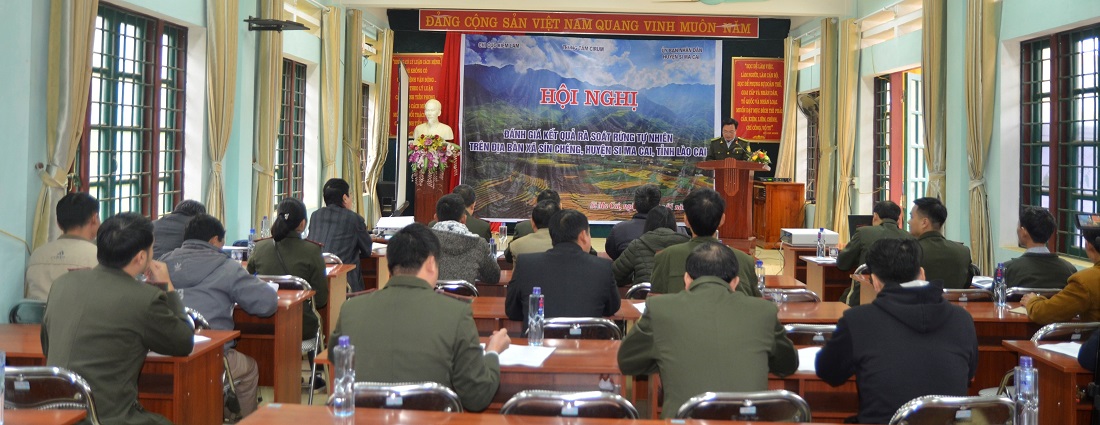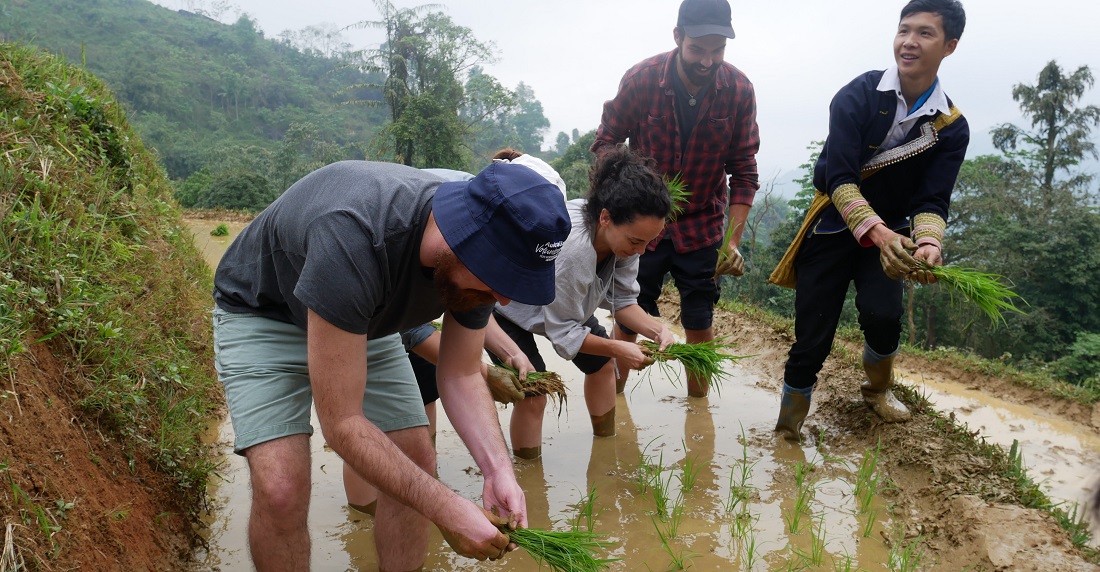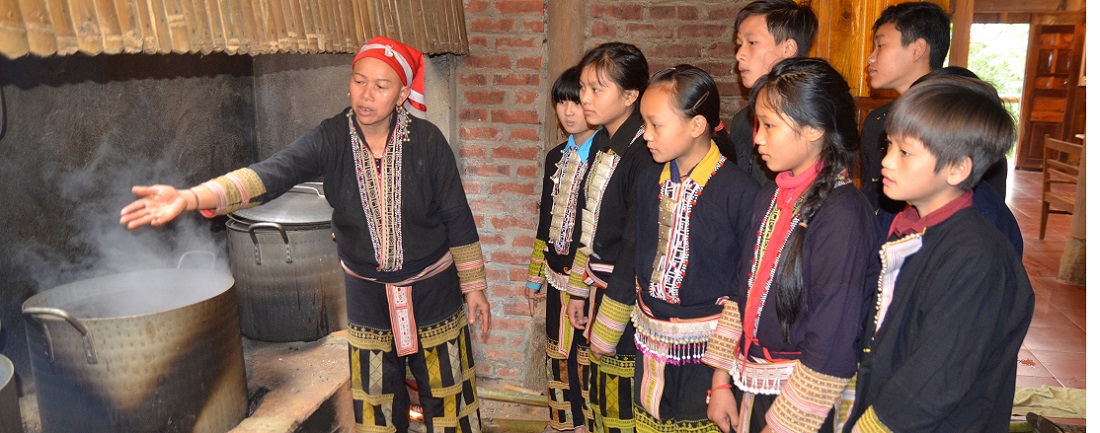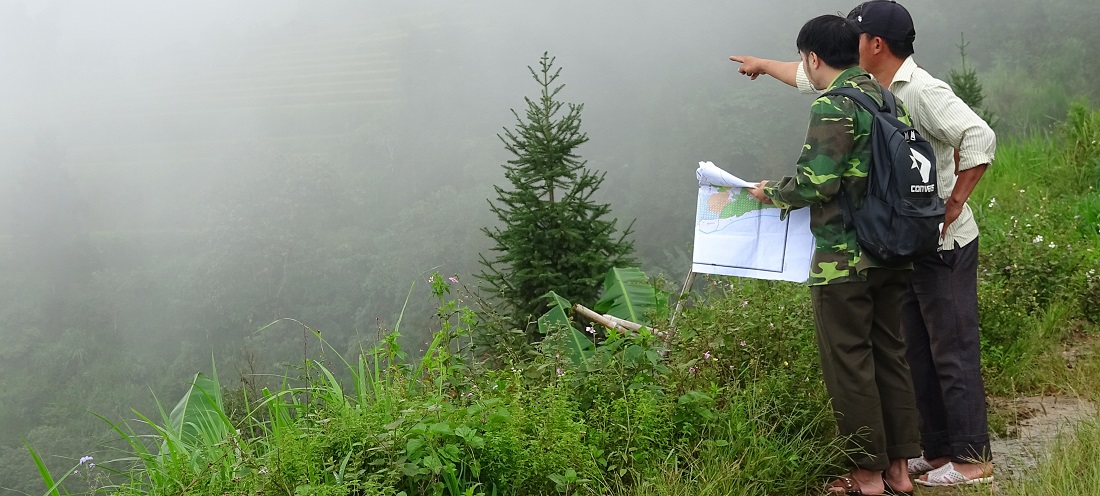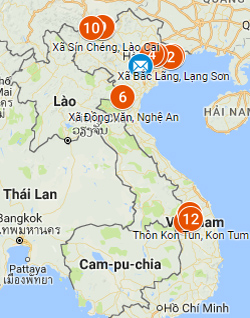News
"The law of the jungle" at the Annamese Range
The strength of local customary laws helped maintain the village's forest when all surrounding forests have turned into barren hills or been replaced with industrial plants.
Inviting guests into the house, Mr. A Hliuh - the deputy patriarch at Ka Bay village, Ho Moong commune, Sa Thay district, Kon Tum province - talked about the recent forest infringement. A group of workers and staff from the paper mill which owns the nearby pine forests came to the village's sacred forest to bathe. Under the law of the village, they must pay a fine of a 30kg pig. People said "Custom rules the law"; and in this case, that proverb was thoroughly and clearly understood and was applied in a very strict and efficient way.
Ritual ceremony of buffalo sacrifice in Ka Bay village, Ho Moong commune, Sa Thay district, Kon Tum province
Located upstream of Sesan river (within 3S area - the largest catchment of the Mekong River), construction on the Pleikrong hydropower project began in 2003 in Kontum. Pleikrong, with an average annual electricity output of 417.2 million kWh, caused more than 4,000 hectares of productive land and residential land to flood, and forced nearly 1,400 households of 6,000 people to move to resettlement area. They almost are indigenous people.
Said Nguyen Van Niem, the chairman of Ho Moong commune, "Heh Moong resettlement area has the same density of population as in a city". Each household received a 400 square meter plot of land including a house and a well to supply water for their daily needs. However, when people moved on, there were a lot of arising problems.
Technically, because building density was too high compared to the terrain of the Central Highlands, where there are up to 240 households on a hill, the living conditions are quite difficult. Especially, groundwater sources are not sufficient to provide water for 240 wells, leading to water scarcity at 85% of wells.
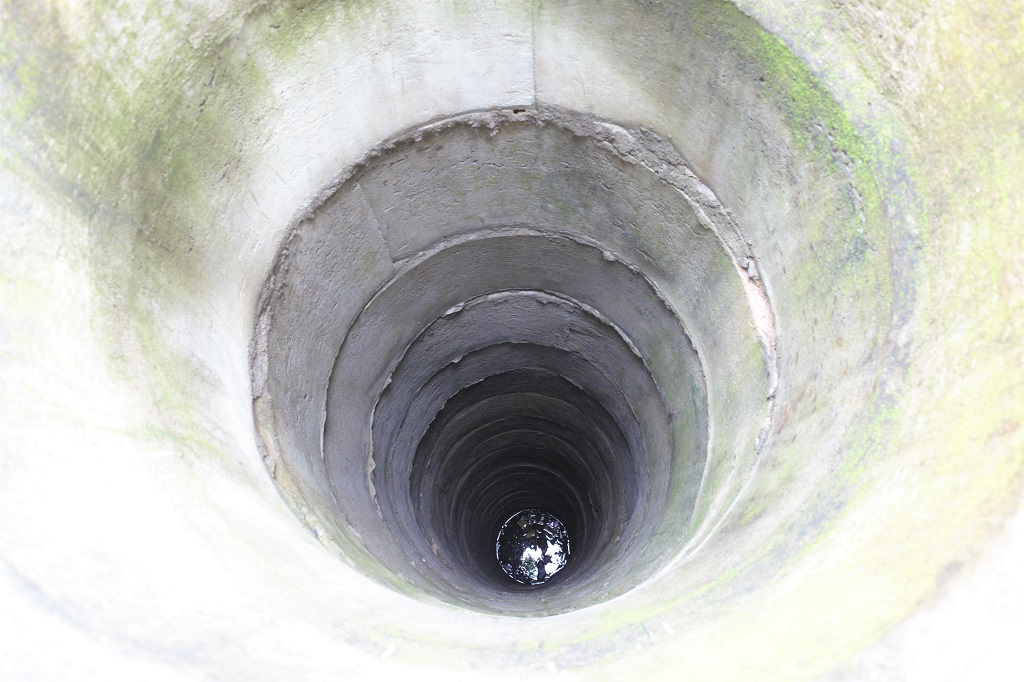
Shortage of water, depleted wells as drought happening vastly in Central Highland in 2016
In the middle of last year (2015), at the same time as the salinity drought in Mekong Delta, the Central Highlands experienced severe weather and a severe drought. When irrigation water was almost depleted, people were devastated to see crops wilting and sickening in the scorching heat. Those wells, which initially had so little water, became totally dry.
"We thought of proposing to the Government that we use a helicopter to carry fresh water to people. Since this is the watershed area, which is very close to the top of Annamese moutain, if the drought continues we will be unable to find any water", Niem shared.
Fortunately, it was the visionary and strict rules of Ka Bay villagers that rescued the whole Ho Moong resettlement area. Initially, Ba Kay village were not in the area of the construction project and villagers didn't have to relocate. However, when the project went into operation, the cultivated land and village were affected.
Local authorities and the project management board built resettlement areas and relocated people to new homes. Nevertheless, the land was arid and uncultivated. As soon as they were relocated, the first thing people did was search for water in remaining flaps near the village.
As Mr. A Hliuh said Bana people respected "each drop of water". This means if a forest brings the village water, people would consider it as holy forest and prohibit any infringement. The villagers are not allowed to go into the woods, even to take a twig or pick a medicinal plant. Toileting or bathing in the wood is absolutely forbidden. If caught, violators will be fined with a 30kg pig.
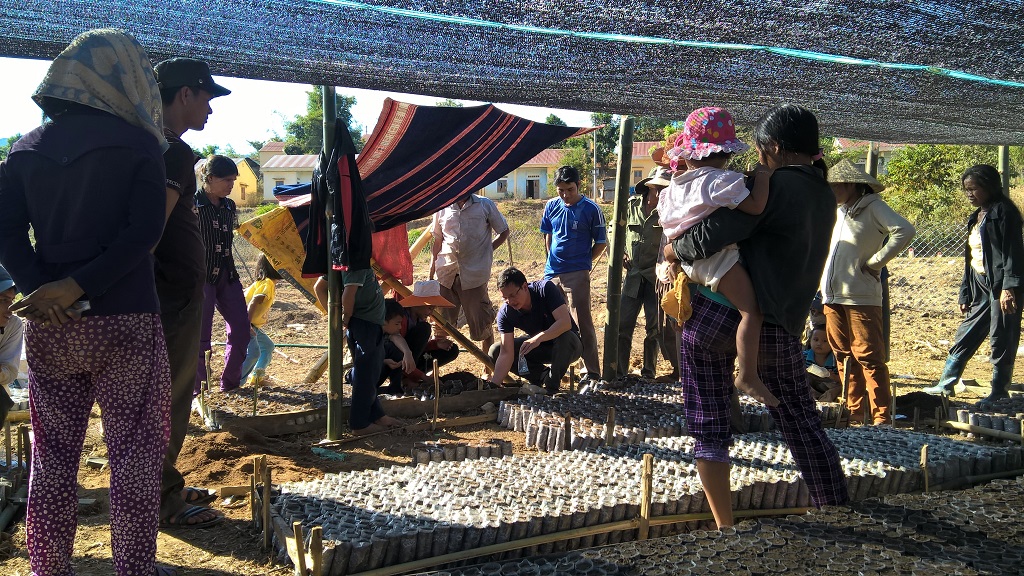 Ja Rai ethnic people in Ka Bay village, Hơ Moong commune, Sa Thầy district, Kon Tum province are learning to set up nursery of Bời lời (Litsea) seeds
Ja Rai ethnic people in Ka Bay village, Hơ Moong commune, Sa Thầy district, Kon Tum province are learning to set up nursery of Bời lời (Litsea) seedsSeveral times per week, a forest patrol team including Mr. A Hliuh, Mr. A Duu, the Ka Bay's Party secretary and an assigned man will patrol not only to check whether the water system is clogged or dirty, but also to prevent any intrusions threatening the forest.
A few months ago, some workers from a paper mill came to check their pine forest. Not knowing the customary law, they bathed in the holy forest and were fined by villagers. It is the strength of customary laws that helps the forest survive and become the only natural forest in the surrounding areas that was not changed into barren hills due to the logging, or to poor forests because of the replanting with industrial plants such as coffee, cassava, pine and rubber.
During the recent severe drought, the sacred forest was the only water supply source for the whole village and the vicinity of Ka Bay. Villagers and local authorities, more than ever, found the importance of saving forests and the particularly essential and intimate role of indigenous community in maintaining the forest. Simply put, without forests, these communities will struggle to survive. Therefore, at any cost, people save the forest in order to save their own source of life. No one can make a difference or do this better than them.
Mr. Duu, the Ka Bay's Party secretary, said: After many years proposing to the government, finally, the Kontum provincial authority has officially granted ownership of holy forest to Ka Bay Village, because the forest is essential to their spiritual life and survival. "We are extremely glad. We thank Government for doing the right thing." Said Duu.
Others
Sai Duan herbal bath service is now open for guests
Sin Cheng, Lao Cai: Deeper study for a complete forest map
Amomum longiligulare – a sustainable livelihood model
CIRUM’s work is improving land allocation outcomes for communities in Bat Xat district, Lao Cai
Workshop on "The results and inadequacies in the implementation of forestry policy"
The voice of the hydropower-driven resettled people should be heard
Community Forest Land Protection and Management: New Opportunities for Ethnic Minorities in Vietnam
A further step towards settle overlapping forest boundaries in Lao Cai
Independent evaluation of our project "Promoting Land Rights for Ethnic Minority People in Vietnam"
LandNet year-end meeting
Community members participate in developing a monitoring indicator framework
Community members participate in developing a monitoring indicator framework
Beautiful images of Sai Duan Herbal Bath Service of the Red Dao disseminated
Amomum longiligulare and joy of the Red Dao in Sai Duan village
The ASEAN We Want: An open statement to ASEAN Leaders






